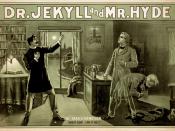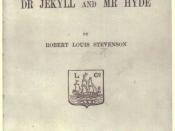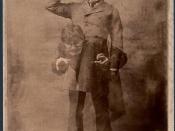Often the most meaningful and revealing statement in a text tends to be its final statement, either concluding the entire story or simply closing the narrative. The same can be said of a film's final image, which can leave the audience suspicious of the film's ending, questioning whether the story has come to a complete conclusion or if the narrative has paused for a while, leaving room for a sequel. I plan to examine the parting sentence of two texts, Emily Bronte's Wuthering Heights and Robert Louis Stevenson's The Strange Case of Dr. Jekyll and Mr. Hyde, in comparison with the final image of two films, Francis Ford Coppala's Apocalypse Now and Orson Welles' Citizen Kane. My intention is to discover the verbal and visual ways in which a narrative closure is achieved and if the narrative has truly come to an end or if it has simply finished for the time being.
The final statement in The Strange Case of Dr. Jekyll and Mr. Hyde perfectly coincides with the final image in Citizen Kane. The statement is as follows: "Here, then, as I lay down the pen, and proceed to seal up my confession, I bring the life of that unhappy Henry Jekyll to an end." In Citizen Kane's final shot, a reversal of the film's opening images, a dissolve shows the exterior of the Kane's palatial mansion at dusk, panning up with the black smoke of his burning possessions pouring from the chimney of his palace and filling the sky. The smoke of Kane's youth, his sled, disappears into the night sky. The camera pans down the chain-link fence where the sign "No Trespassing" is visible again as it was at the film's start. The film fades out on the "K" of the crest...


